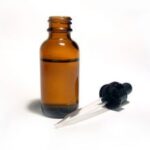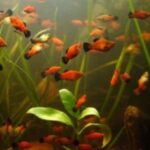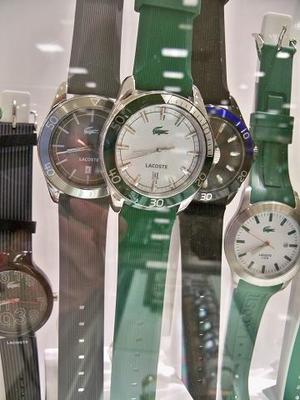An excellent choice for anyone contemplating delving into the fascinating world of the sea anemone. The long tentacle anemone offers one an excellent chance of maintaining an anemone in their marine aquarium, even by the novice aquarist. Obviously, having some sort of understanding of what an anemone is, combined with husbandry requirements and essential equipment employment will aid ten fold in the ability to maintain a marine environment that consists of an anemone for one.
The Pacific Long -Tentacle Anemone, or LTA for short, hails from the Indo-Pacific region of the Pacific and is part of the actiniidae family. They are usually found in shallower regions of the reef, due to their need for intense lighting to support their population of single celled dinoflagellates known more effectively as zooxanthellae. Because of this very important scenario regarding zooxanthellae and long tentacle anemones, its crucial to supply metal halide lighting for the best results in maintaining an anemone for an extended period of time. The zooxanthellae housed in the tissue of the pacific long tentacle anemone provides essential food and nutrients to the anemone. In return, the anemone provides its zooxanthellae it own food source known as ammonium for one. The light also provides a photosynthetic process between zooxanthellae and its light source, similar to terrestrial plants and trees and their dependence on the sun for energy among other key components.
LTA’s consist of an oral disc, which contains the tentacles and nematocysts used for protection and food capture. In the center of the oral disc is its mouth that is used for swallowing food as well as for waste removal. The long tentacle anemone is a sessile animal that maintains two ciliary upright oral cavities(siphonoglyph) and consists of a single polyp. The long tentacle anemone usually have a reddish colored foot that it uses to adhere itself to rock, glass, or bury in the sand. They also have verrucae, which are small bumps or pimples that surround the outside of its disc and upper foot area. These verrucae are sticky to the touch and basically afford the anemone another form of adhesion to neighboring substrate etc. The verrucae also enables the anemone the ability to attach to substrate for protection against excess light and possible predatory protection.
The macrodactyla doreensis or long tentacle anemones can either have stripped tentacles that are white or cream colored, or consist of multi-colored tentacles such as white with purple tipped tapering corkscrew-like tips to their tentacles.
LTA’s require a deep sand bed with small grain sized substrate or a muddy substrate for the best success as again this type of anemone digs into the substrate to immobilize itself. They should not be placed on rock work as they will surely move from there and possibly injure or even kill neighboring corals, gorgonians, sessile invertebrates or even small fish it may encounter in its effort to find its so called “happy place” in the confines of the soft substrate.
The size attained by long tentacle anemones is large, considering the size of most other species of anemone, though not as large as the carpet or magnificent anemone, they will grow to a foot or so in diameter. Because of this larger size, it should be assumed that a large tank size of 75 gallon or greater is being employed.
Because the long tentacle anemone contains strong stinging nematocysts, care must be given in terms of other inhabitants within the tank to eliminate the chances of injury or death to neighboring livestock that may come in contact to the potent sting of the anemone, that will always result in the detrimental consequences being observed by the other animal, and never the anemone.
Feeding of the macrodactyla doreensis anemone is provided by the host zooxanthellae residing in the anemones tissue, and the filter feeding or absorbing through its tissue. On occasion, the addition of a proteinaceous food source such as krill, clam, squid or silverside can and will be digested and offer a nice alternative and different viable solution to a nutritious meal. This should be done once a week or so as providing more food than is actually needed will cause detrimental water parameters issues and other factors that will negate what we all strive for as conscientious marine aquarists.
The collection process, or should I say the purchasing process of selecting the right long tentacle anemone and transporting it ultimately to releasing it into your tank, will take some time and should also take a close eye for examination to ensure that you have chosen the right anemone based on health and color. The selection of the healthiest specimen will greatly increase your odds in the anemone surviving the initial stages of it being introduced into your tanks population.
Often times you will witness the size of an anemone change like day and night. This could be caused by regurgitated food or waste being removed from within. These examples are common and should not be cause of concern. However, becoming smaller in size can have something to do with it deteriorating in health rather quickly. Messenterial filaments may be seen as strands of strings, and may be cause of something not right. Water parameter issue are ultimately the biggest issue that can negatively effect the health and vigor of an anemone. That combined with the way in which you remove the foot from its place of adhesion. This process has lead to more than its share of death of anemones and clams, due to bad removal and untimely removal as well.
The long tentacle anemone is definitely a great way to add an anemone into your diverse marine set-up. They are a step up from the Condylactis or rock and flower anemone in terms of requirements and hardiness, but with initial variables being in check and some research providing knowledge and support, you can have success with a long tentacle anemone and even try to have a clownfish host find its home in the confines of the privacy and protection within the tentacles of the anemone.
Care needs to be addressed, however, regarding the powerheads found with the tank. Powerheads and anemones do not get along very well and the anemone will always take back seat to the powerhead. I have seen so many cases of various species of anemone get wrapped up in the inflow from powerheads with no chance at removing itself and to survive the damage done to the anemone.
These are beautiful animals that should be given so attention to as they can make an excellent addition and add an exclamation point to your tank as a whole. The think of the added benefit of a clown fish hosting an anemone with the tentacles flowing so calmly and the playful clown scurrying in and out of the protective confines of its new home.



